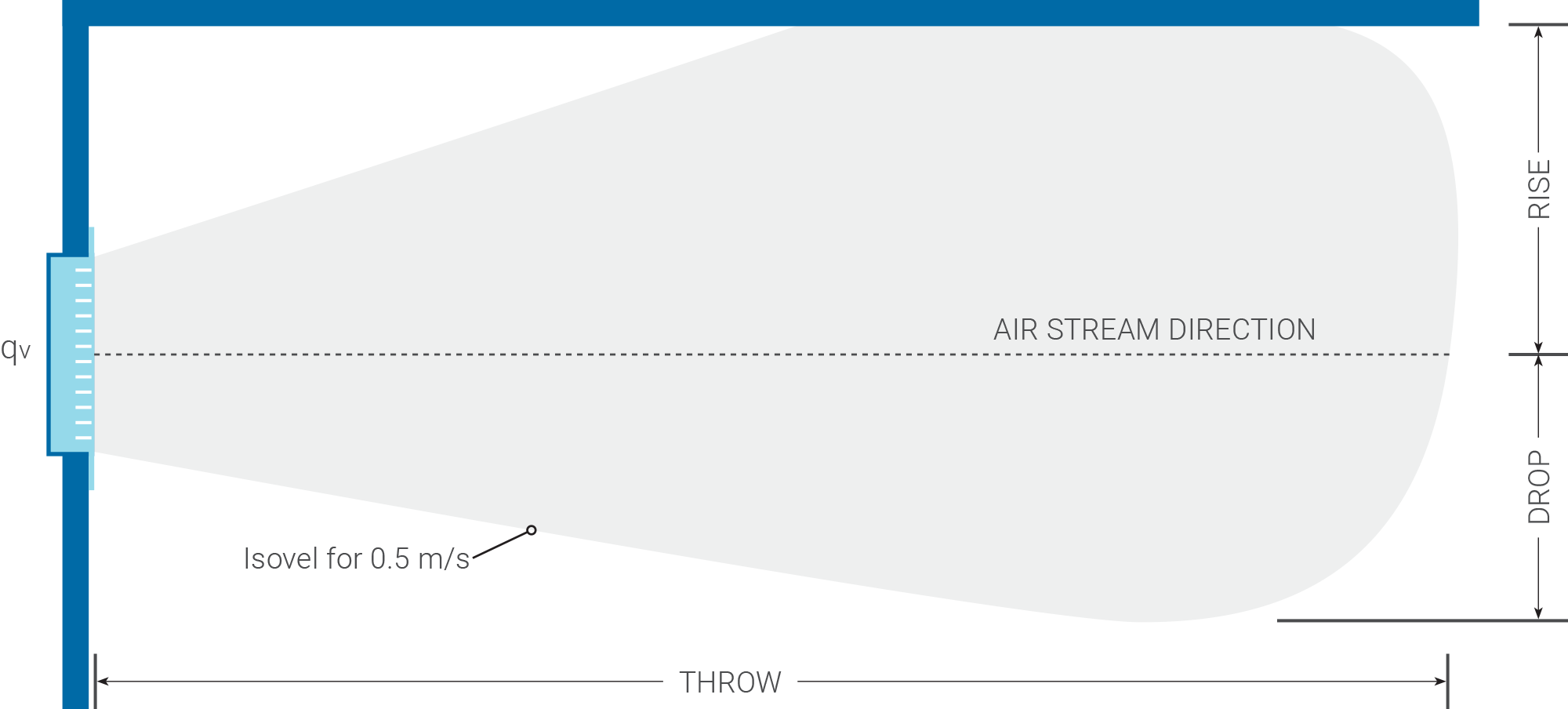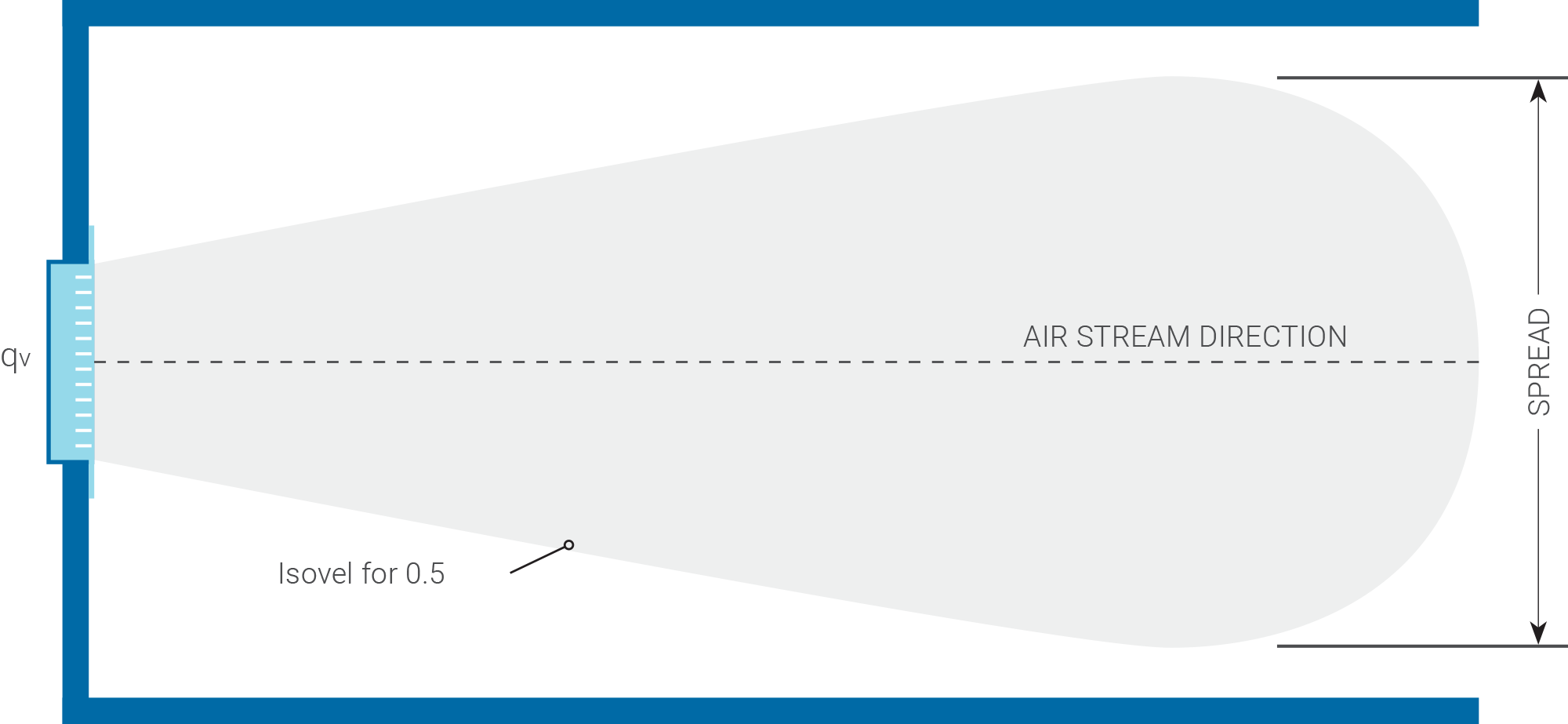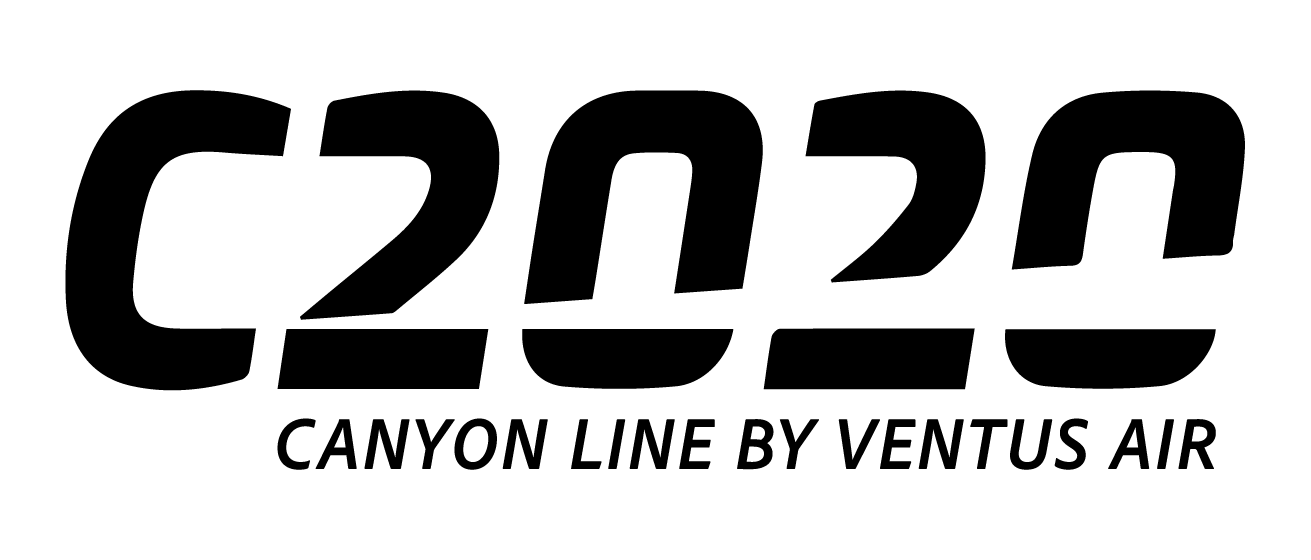Airflow Fundamentals
Distribution of Air Conditioning Outlets
The purpose of the experimental and computational study of air distribution vents with air grilles, manufactured by Ventus is to acknowledge and develop the appropriate operating range of air grilles and the fundamental values that characterize them. The study took place at the Laboratory of fluid dynamics at the University of Patra, under the supervision of Mr. Dionysios-Eleftherios Margaris. Every air-conditioned area should be ventilated evenly to avoid any discomfort caused by temperature changes or air velocity. The following table shows the range of optimum air velocity depending on the application.
| Room Air Velocity (m/s) | Persons Reactions | Application |
|---|---|---|
| 0-0.08 | Sweltering environment | None |
| 0.13 | Optimal speed | Everywhere |
| 0.25 | Maximum tolerated speed for individual sitting space | Everywhere |
| 0.33 | Adverse | Several |
| 0.38 | Maximum limit per person moving in a space | Commercial shops |
| 0.38-1.52 | High air speeds | Only Industrial |
Characteristics
Air velocity at a distance of approximately 2,5cm from the grille is known as the air exit velocity Vc (m/s). Under the regulation followed in this study and shown in the above figure, the maximum velocity in forming the boundary of the range and diffusion is 0.5m/s. Table below presents the ranges of air output velocities depending on the application.
| Velocity Out Vc (m/s) | Space / Application |
|---|---|
| 1.5-2.5 | Libraries |
| 2.5-3.8 | Hotels, offices, houses |
| 4 | Restaurants and dining rooms |
| 5 | Gyms, assembly hall |
| 7 | Factories, commercial stores |
Diffusers cause a pressure drop in the airstream that must be considered in calculating the pressure drop of the fan. The passage of air through a diffuser causes a pressure drop due to the conversion of the air energy to speed and due to friction phenomena in the diffuser itself.
As presented in the figure above, throw is defined as the horizontal distance from the diffuser to a point in the mixed airstream, where the maximum sustained velocity has been reduced to a specific value (0.5 m/s) defined by the regulations under the CYPRUS STANDARD (CYS EN: 12238:2001).
Noise measurement is necessary in order to sustain the limits of comfort zone. As the noise level is related to the discharge velocity, the limitation of the velocity holds the noise within normal levels. Indicator values for the noise level are shown on the next table (TEEGreek Technical Chamber instructions).
| Noise Level | Space / Application |
|---|---|
| 25 dB | Concert halls, Recording studios |
| 30 dB | Bedrooms, Lecture rooms, Libraries |
| 35 dB | Residences, Hotel rooms, Hospital rooms, Offices, Restaurants, Cinemas |
| 40 dB | Retail stores, Laboratories, Waiting rooms |
| 45 dB | Kitchens, Server rooms, Super markets |
| 50 dB | Light industry |
Drop, as presented in the figure below, is the vertical distance between the centerline of the grille and the intersection of the airstream at the end of the throw. When the air that comes out from a diffuser is colder than air in the ventilated room, it has greater density and tends to (being heavier) descent, creating the phenomenon of drop. Also, when the density of the fed air is less than that of the air in the room, then the lighter-fed fluid rises to the ceiling creating the effect of the rise. This applies to wall-mounted grilles and is not applicable in ceiling appliances.

Air passing through a diffuser, when there are no obstacles in the air stream, takes the form of asymmetrical beam. Spread is defined as the maximum distance between the two symmetrical ends normally formed by the beam.


